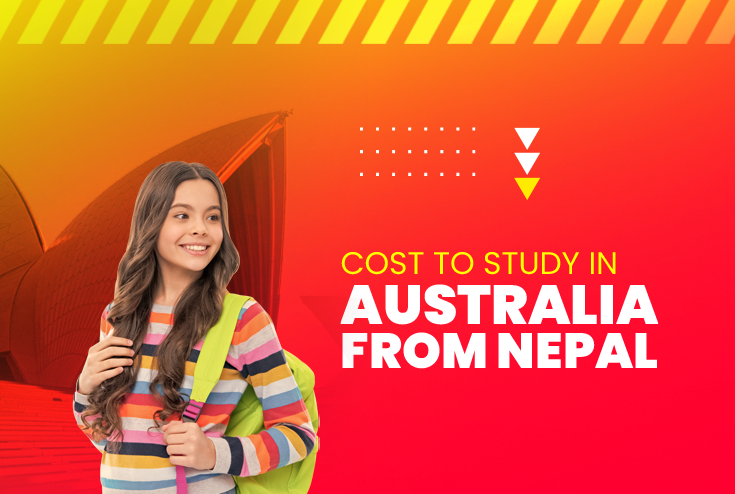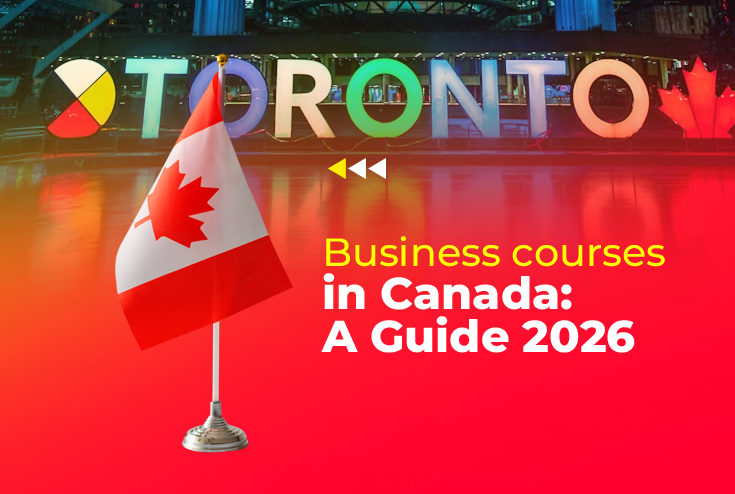
Cost to Study in Australia from Nepal in 2025: A Guide
Every year, thousands of Nepali students aspire to pursue higher education in Australia - a global education hub known for its top-ranking universities, diverse culture, and career prospects. However, navigating the real cost of studying in Australia can be overwhelming. In 2025, with rising global inflation and tighter student visa screening, being well-prepared financially is more important than ever. This blog breaks down all the key expenses - from tuition and visa fees to living costs - giving Nepali students and parents a reliable, up-to-date reference to plan their study journey in Australia confidently.
Table of Contents
Why Choose Australia for Higher Education?
Total Cost to Study in Australia from Nepal
Tuition Costs for Nepali Students in Australia
Diploma and Certificate Programs (VET Courses)
Bachelor’s Degree Programs
Master’s Degree Programs
Research Degrees (MPhil, PhD)
Living Expenses for Nepali Students in Australia
Cost of Living Comparison by City in Australia
Australia Student Visa Cost from Nepal
Cost of Health Insurance for International Students in Australia
Travel Cost in Australia for International Students
Tips to Reduce the Cost of Studying in Australia for Nepali Students
Can You Work While Studying in Australia?
Conclusion
FAQs - Cost to Study in Australia from Nepal
Why Choose Australia for Higher Education?
Australia has become one of the top study destinations for Nepali students, with more than 53,000 enrollments as of 2024. This trend is rising in 2025 due to the country’s global reputation in education, diverse learning environment, and post-study work opportunities. Here's why thousands of students from Nepal are choosing Australia for higher education:
1. Globally Recognized Degrees
Australian universities are consistently ranked among the top 100 universities worldwide (QS and Times Higher Education Rankings). Degrees from institutions like the University of Melbourne, UNSW, ANU, and Monash University are globally recognized, increasing job opportunities both in Nepal and abroad.
2. Wide Range of Courses and Universities
Australia offers over 22,000+ courses across 1,100+ institutions, covering disciplines such as business, IT, engineering, nursing, hospitality, and data science. Nepali students can choose diploma, bachelor’s, master’s, and PhD programs based on their interests and future goals.
3. Scholarships for Nepali Students
Australian universities and the government provide numerous scholarships like Australia Awards, Destination Australia, and university-specific merit-based grants. Some cover up to 100% tuition fees plus living expenses.
4. High Student Visa Success Rate
The Australian student visa (Subclass 500) has a high approval rate for genuine students from Nepal, provided they meet financial, academic, and English language requirements.
5. Post-Study Work Opportunities (PSW)
Graduates in 2025 can stay and work in Australia for 2–6 years after completing their degree, depending on the qualification and location (regional or metro). This helps students gain international work experience and build a pathway to permanent residency.
6. Earn While You Learn
Nepali students can work up to 48 hours per fortnight during the semester and full-time during vacations. The minimum wage in Australia is around AUD 23/hour, helping students cover part of their living expenses.
7. Safe, Multicultural Environment
Australia is known for being safe, politically stable, and welcoming to international students. Major cities like Melbourne, Sydney, and Brisbane have vibrant Nepali communities, temples, grocery stores, and cultural events that make students feel at home.
Total Cost to Study in Australia from Nepal
Planning your studies abroad begins with understanding the real cost of education. From tuition fees and visa costs to living expenses and insurance, here's a complete overview of how much it will cost for a Nepali student to study in Australia in 2025.
Tuition Costs for Nepali Students in Australia
Tuition fees are one of the biggest components of the total cost of studying in Australia. The tuition fees for Nepali students in Australia can range from AUD 10,000 to 50,000 (NPR 8.9 to 44.8 Lakhs) depending on the university, course type, and level of study i.e. diploma, undergraduate, postgraduate, or research-based degrees.
In 2025, here's what Nepali students can expect to pay:
1. Diploma and Certificate Programs (VET Courses)
Vocational Education and Training (VET) programs are popular for skill-based learning and shorter course durations.
2. Bachelor’s Degree Programs
Bachelor’s programs are usually 3 to 4 years and are the most common route for undergraduate students from Nepal.
3. Master’s Degree Programs
Master’s programs are highly sought after by Nepali graduates aiming for academic excellence and post-study work rights. They generally span 1.5 to 2 years.
4. Research Degrees (MPhil, PhD)
Research-based programs are ideal for those pursuing careers in academia or high-level industry R&D.
Living Expenses for Nepali Students in Australia
The Australian Government recommends international students show a minimum of AUD 29,710/year (approx. NPR 26.6 Lakhs) for visa purposes. However, the actual cost may vary based on lifestyle, location, and accommodation type.
Cost of Living Comparison by City in Australia
Australia Student Visa Cost from Nepal
The Australian student visa fee from Nepal in 2025 is AUD 2,000 (approximately NPR 180,087 as of July, 2025). This fee is for Subclass 500, the standard visa required for international students. In addition to the visa application fee, Nepali students may incur extra costs such as biometrics enrollment (around NPR 3,200) and medical examination (NPR 10,000 - 12,000).
Cost of Health Insurance for International Students in Australia
The Overseas Student Health Cover (OSHC) for Australia, typically ranges between AUD 500 to AUD 700 per year, depending on the provider and level of coverage. This is a mandatory requirement for all international students applying for a student visa (Subclass 500).
Some of the popular OSHC providers include BUPA, NIB, Allianz Care, and Medibank, all offering various single, couple, or family packages. Students must purchase OSHC for the entire duration of their stay in Australia, including any preparatory or bridging courses, to ensure continuous medical coverage and visa compliance.
Travel Cost in Australia for International Students
Transportation Costs in Australia vary depending on the city, transport type, distance from university, and various student discounts. You can expect the costs of around AUD 100 - 600 per month.
Tips to Reduce the Cost of Studying in Australia for Nepali Students
Studying in Australia is a valuable investment, but it doesn’t have to be unaffordable. With smart planning and some practical strategies, Nepali students can significantly reduce their overall expenses while enjoying a comfortable student life.
Here are some effective ways to cut costs in 2025:
Apply early for university scholarships
Choose regional universities for lower fees & living costs
Stay in shared accommodations
Work part-time under visa rules
Can You Work While Studying in Australia?
Yes. From July 1, 2023, international students can work up to 48 hours per fortnight during the semester and full-time during holidays/breaks.
Average part-time wage: AUD 20 - 25/hour
Monthly income (avg): AUD 800 - 1,200 ( Approx. NPR 72,000 - 1 Lakh+)
This can help cover:
Rent
Groceries
Travel expenses
Conclusion
Studying in Australia offers Nepali students world-class education, vibrant multicultural experiences, and exciting post-study opportunities. However, to make the most of it, it’s essential to understand and prepare for the full financial picture - from tuition fees and visa expenses to living costs and insurance.
While the overall costs to study in Australia might seem like a large investment, it is one that can yield excellent academic, personal, and career returns. By applying early, choosing cost-effective cities and programs, securing scholarships, and managing daily expenses wisely, Nepali students can significantly reduce their burden and enjoy a smoother transition to life in Australia.
Whether you're aiming for a diploma, bachelor’s, or master’s degree proper financial planning is the key to success. Use this guide as your trusted roadmap.
If you need expert guidance on Australian universities, courses, financial planning and other relevant information regarding studying in Australia, then contact us now and take your first step toward a brighter future in Australia.
FAQs - Cost to Study in Australia from Nepal
1. How much does it cost to study in Australia for Nepali students?
The total first-year cost for Nepali students ranges from NPR 38 to 58 Lakhs, including tuition, visa fees, living expenses, insurance, and travel. Tuition alone can cost AUD 20,000 to 45,000 per year, while living expenses range from AUD 15,000 to 26,000 annually depending on the city and lifestyle.
2. How much GPA is required to study in Australia from Nepal?
Australian universities generally require a minimum GPA of 2.8 or higher on a 4.0 scale (equivalent to 60% – 70% or higher in Nepalese grading). However, top universities may require higher academic scores, especially for competitive programs like Engineering, Nursing, or MBA.
3. Is a 2-year gap accepted in Australia?
Yes, a 2-year academic or career gap is accepted, especially in the graduate levels, provided you have valid documentation to justify it — such as work experience, skill training, family responsibilities, or medical reasons. Gaps of more than 2 years are also accepted in many cases with strong supporting evidence.
4. What is the PTE score for Australia?
The minimum PTE Academic score for an Australian student visa is overall 42, with no band less than 36. However, most universities require a score of 50–65+, depending on the course level. Competitive programs like Nursing or Law may need scores of 65–79 or higher.
5. Can I go to Australia without IELTS?
No, you must prove your English language proficiency for the Australian visa from Nepal. For that, you can either submit the IELTS scores or other alternative test scores like PTE, TOEFL, etc.
Also Read:
Study in Australia from Nepal: A 2025 Guide
Masters by Research in Australia for Nepalese Students




